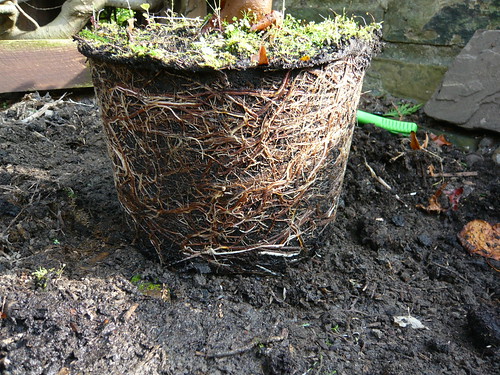When to Move Shrubs and Small Trees
A plant in the wrong place is one definition of a weed. All is not lost if this happens to be a favoured shrub or small tree. However it is nearly too late to move your shrubs this year if you want to give them the best chance of survival.
Season By Season Shrub Moving
Autumn from late September until mid November is a good time to move shrubs and trees. The soil is still warm and you can pick a time when the soil has been soaked with Autumn rain. This encourages plants to reestablish themselves more rapidly and give them a good start into growth in Spring.
Avoid transplanting tender or borderline hardy plants as disturbance can damage and rot roots. Frost can also penetrate broken soil more easily.
Winter is considered too cold and wet to move even hardy specimens. From December to February you are likely to mix cold top soil with lower soil and on clay you may exacerbate water logging problems.
Spring from March to May is the prime time for transplants. The temperatures are rising, the sunlight lasts longer and there is still moisture in the soil. Borderline hardy plants can now be moved as the chance of prolonged frost has receeded.
Summer moving risks a shortage of water which can be very harmful to larger plants. If you must move at this time cut back previous seasons growth to reduce the leaf area, reduce wilting and speed up re-establishment. Mulch well and keep watering through to winter. It may be necessary to cover foliage with fleece in hot summer sunshine to cut water loss.
Gardeners Tips on How to Move Shrubs
- For special shrubs cut a channel, at least 1 foot from the main stem, all around the root ball during autumn. Leave until spring when it should have grown more fibrous roots to help the transplanting. Then lift with the rootball cutting under the shrub.
- Soak the roots the day before you plan to move and have the new hole ready so the roots do not dry out.
- Lift a block of soil with the roots as a root ball
- Watering the new position is more important than feeding the plant. Add slow release fertilizer if required but avoid encouraging too much soft fleshy new growth
- Mix garden soil, compost and water retaining granules with the soil you use to back fill the new hole.
- Prune and pinch back new shoots to get a balance between roots and top growth.
Replanting Aftercare
- Ensure your planting hole is large enough to accommodate the new plant with space to back fill with good compost or soil.
- Tamp the soil down as you replant, water well and mulch around the newly planted shrub
- In the first year after replanting keep well watered with copious quantities of water. Provide a through soaking rather than a light spray that may bring roots to the surface.
- Provide some support if the new location is windy
